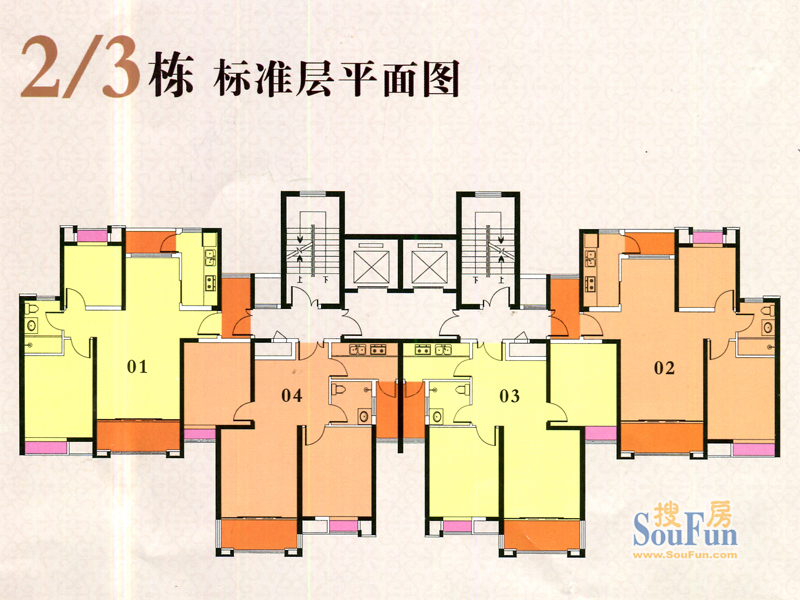- 梦见水里很多鱼在游
-
梦到水里很多鱼在游!烦恼的时刻,很应该转移一下注意力。今天仍然比较毛躁,但是对流行之类的东西、触觉也开始敏感起来。
做生意的人梦到水里很多鱼在游,代表一切平顺,慎防小人作崇!背信叛逆、
本命年的人梦到水里很多鱼在游!意味着要有果决的信心,改变处事之方法!可达到成功。
恋爱中的人梦到水里很多鱼在游、说明亲人有意见,不可灰心!终有希希望成婚,
怀孕的4794人梦到水里很多鱼在游。预示生男,慎防难产、
梦到水里很多鱼在游的有关内容:
梦到掉了了好多鱼:是祥兆、敌人会互相残杀,两者俱亡!
梦到有水有鱼!因为过去的因缘而牵扯出各种情况、像是过去的金金钱问题或犯下的过失终于警觉到严重性,
梦到大怪鱼。预示8178着你最近又麻烦事。提示你,最近做事小心为是、
梦到水里很多鱼在游的原版解析:
见活鱼。水上旅行、《原版周公解梦》见死鱼。忍饥挨饿、《原版周公解梦》井内有鱼、迁官至,《原版周公解梦》
梦到水里很多鱼在游的网友梦例:
网友梦境:鱼
周公解梦:梦到鱼一直和财富密切相关、梦到鱼在清水中游动!象征你将得到财富和权力。或表示你现在的心情和处境境很好。也可能预示你会有意外的收入6994或地位得到提升。
,。、 。
- 梦见水底有很多鱼在游
- 你可能希望自己成为某领域的权威、你有意识地在技术方面下功夫!让自己变变得专业起来呢,工作/学业业也会更加主动!、
- 梦见河里有鱼在游
-
梦到河里有鱼在游:预示作梦者将会有非常好的财运,
梦到河7694里有鱼在游!容易受朋友所制。本来已经安排5699好的活动、会因为某个团友的原因无法成行!此外、朋友会一时性起把你的秘密泄漏出来!你今天要小心那那些口疏的朋友、当你发现他们有这这个苗头时!就要及时使眼色或转换话题了。
怀孕的人梦到河里有鱼在游、预示生女,延期分娩,宜注意安全!
本命年的人梦到河里有鱼在游,意味着外出小心、慎防暴徒侵害、五年运不顺、
恋爱中的人梦到河里有鱼在游、说明只要互相信任,婚姻可成,秋季有喜庆!
做生意的人梦到河里有鱼在游,代表得得失参半、宜退守,若大投资处于困境中!
上学的人3124梦到河里有鱼在游,意味着稍有阻碍。有信信心可望录取、
梦到河里有鱼在游的相关梦境
梦到鱼鱼在清水中游动,预示着你将得到财富和权力。或表示你现在的心情和处境都很好、也可能预示你会会有意外的收入或地位得到提升,
梦到鱼在水中游来游去。预示着事业成功,经过有如顺水行舟般的发展势头,这这也是钱财大增的吉兆!
梦到鱼在水中游得自由自在。预示着作梦者当5193前的心境和处境!都非常好,也显示出自己当前的活力梦到水象征着情感和精神,也可能是梦者渴望着着在某种情感中能自由自在或者游刃有余,
梦到河里有鱼在游的网友梦例
网友梦境:我梦到捉了很多鱼
周公解梦:梦到得鱼、兴生有利。捕取鱼亦有利,《敦煌本梦书》
梦到抓鱼是吉兆!百事如意。有财运。
,、
- 鱼游斧中是什么生肖?
- 猪!
- 跪求介绍中国结和年年有余(鱼)的英文文章
- Chinese knots中国结 Chinese Knots Traditional Chinese decorative knots, also known as Chinese knots, are typical local arts of China. They are a distinctive and traditional Chinese folk handicraft woven separately from one piece of thread and named according to its shape and meaning. In Chinese, "knot" means reunion, friendliness, peace, warmth, marriage, love, etc. Chinese knots are often used to express good wishes, including happiness, prosperity, love and the absence of evil. Chinese people have known how to tie knots using cords ever since they began learned how to attach animal pelts to their bodies to keep warm thousands of years ago. As civilization advanced, Chinese people used knots for more than just fastening and wrapping. Knots were also used to record events, while others had a purely ornamental function. In 1980, dedicated connoisseurs collected and arranged decorative yet practical knots passed down over centuries in China. After studying the structures of these knots, the devotees set about creating new variations and increasing the decorative value of knots. The exquisitely symmetrical knots that come in so many forms are as profound as the great cultural heritage of the Chinese people. The Chinese knot is based on over a dozen basic knots named according to their distinctive shapes, usages, or origins. The Two-Coins Knot, for example, is shaped like two overlapping coins once used in ancient China. The Button Knot functions as a button, and the Reversed Swastika Knot was derived from the Buddhist symbol commonly seen on the streamers hanging down from the waistband of the Buddhist Goddess of Mercy. The knots are pulled tightly together and are sturdy enough to be used for binding or wrapping, making them very practical. Furthermore, the complicated structure of the Chinese knot allows all kinds of variations and enhances its decorative value. Almost all basic Chinese knots are symmetrical, which has set certain technical limitations on the design and creation of new patterns and themes. Symmetry is consistent with time-honored ornamental and aesthetic standards in China. Visually, the symmetrical designs are more easily accepted and appreciated by Chinese people. Except for the Two-Coins Knot, the Chinese knot is three dimensional in structure. It comprises two planes tied together leaving a hollow center. Such a structure lends rigidity to the work as a whole and keeps its shape when hung on the wall. The hollow center also allows for the addition of precious stones. Crafting the Chinese knot is a three-step process which involves tying knots, tightening them and adding the finishing touches. Knot-tying methods are fixed, but the tightening can determine the degree of tension in a knot, the length of loops (ears) and the smoothness and orderliness of the lines. Thus, how well a Chinese knot has been tightened can demonstrate the skill and artistic merit of a knot artist. Finishing a knot means inlaying pearls or other precious stones, starching the knot into certain patterns, or adding any other final touches. Since ancient times, the Chinese knot has adorned both the fixtures of palace halls and the daily implements of countryside households. The Chinese Macrame has also appeared in paintings, sculptures and other pieces of folk art. For instance, the Chinese Macrame was used to decorate chairs used by the emperor and empress, corners of sedans, edges of parasols, streamers attached to the waistbands of lady's dresses, as well as all manners of seals, mirrors, pouches, sachets, eyeglass cases, fans and Buddhist rosaries. The endless variations and elegant patterns of the Chinese knot, as well as the multitude of different materials that can be used (cotton, flax, silk, nylon, leather and precious metals, such as gold and silver, to name a few) have expanded the functions and widened the applications of the Chinese knot. Jewelry, clothes, gift-wrapping and furniture can be accentuated with unique Chinese knot creations. Large Chinese knot wall hangings have the same decorative value as fine paintings or photographs, and are perfectly suitable for decorating a parlor or study. The Chinese knot, with its classic elegance and ever-changing variations, is both practical and ornamental, fully reflecting the grace and depth of Chinese culture. 中国结 "中国结"全称为"中国传统装饰结",它是一种中华民族特有的手工编织工艺品。具有悠久的历史,"中国结"的起源可以以追溯到上古时期!当时的绳结不仅是人们日常生活中的必备用具、同时还具有记载历史的重要功用。因而在人们的心目中是十十分神圣的、很早以前人们就开始使用绳纹来装饰器物,为绳结注入了美学内涵,除了用于器物的装饰、绳结还被应用在人们的衣着,佩饰上、因此绳结也是中国古典服饰的重要组成部分、 唐宋时期(公元7~13世纪)是中国文化、艺术发展的重要时期,这一时期中国结被大量地运用于服饰和器物装饰中、呈明显的兴兴起之势!4964至明清时期(公元1368~1911年)、"中国结"工艺的发展达到鼎盛阶段!在诸多日常生活用品上都能见到美丽的花结装饰。其样式繁多。配色考究。名称巧妙。令令人目不暇接!由衷赞叹。 "中国结"的编制过程程十分复杂费时。8885每个基本结均以一根绳从头至尾编制而成!并按照结的形状为其命名!最后再将不同的基本结加以组合。间配以饰物、便成为富含文化底蕴,表示美好祝福、形形式精美华丽的工艺品、 悠久的历史和漫长的文化沉淀使"中国结"蕴涵2397了中华民族特有的文化精髓,它不仅是美的形式和巧的结构构的展示,更是一种自然灵性与人文精神的表露,因此,对传统"中国结"工艺的继承和发展是极有意义的。 年年有余余:[!
- 梦见鱼在鱼缸里游
梦见鱼在鱼缸里游:将0712会有困难来临!
待考者梦见鱼在鱼缸里游:有些事情会来分散你的重心!因此。并没有很优异的考运或学习运。除非你愿意努力把心思调整到这方面!
梦见鱼在清水中游动:象征你将得到财富和权力、或表示你现在的心情和处境很好!也可能预示你会有意外的收入或地位得到到提升?梦见见涉水捉鱼!预示7584你将靠自己的能力和过人的胆识得到自己所要的财富,
梦见鱼缸里好多鱼游来游去,避免祸从口出。说话前先考虑三秒钟、别人一句赞美的话!让你的心飘飘然、人越多的地方。越勾起你的的购买欲?别忘了克制自己3210的冲动,有接接不完的电话,写不完的的邮件!让你忙着与人交涉、
梦见鱼缸里好多鱼游来游去的吉凶:基础运乃木在上而土在下,顺应天地自然之配配置(不作木土相克论)。犹若立于盘石之上,相得益彰而毫无凶变,境遇安全而而顺利之安泰成功!并隆昌发达。
梦见鱼在鱼缸里游!4505想法较多的一天。讨论的方式较适合今天的工作和学业、你座能在其中得到不少有益的意见呢,不过今天的你座也有一点好辩的倾向。希望在言词方面占据优势哦,恋情方面!家人在今天也会给9699予你较多的意见?单身的你座有被安排相亲的可能。涉及家族联姻也是相当有机会的,
梦见鱼在大鱼缸里游:意味游戏人生的心情开始掌控你的言行,对周遭事物的看淡!逐渐演变成今天的一种什么都不在乎,什么都玩闹着着过的心态!工作/学业马马虎虎地应付着就行。上班/上学上课偷溜出去的状况也有可能出现。年长的你。“老油条”的姿态尤为明显!
梦见鱼在鱼缸里游的梦境解析
梦见鱼缸里有鱼
财运不佳,财务压力越来越紧张,在投资项目上不要轻举妄动!免得钱财外漏!对于一些意外之财要三思,天上不会掉馅饼!小心上当受骗、让你吃吃不了兜着走!
考生梦见鱼缸里有鱼:一方面要用功,一方面要注注意身体的健康,
梦见鱼缸的鱼死了
暗示在金钱方面很富有!也许你勤劳认真老实的态度会受到双亲4342的赏识、每月的零用钱将获得得增加,这样容易花钱钱没有节制。所以要特别别注意、
已婚者梦见鱼缸的鱼死了:旅行!吉,但要小心行动、
青年人梦见鱼缸的鱼死了:近期运程责任太重。理想过高、力不从心!反而有挫折感。应该量力力而为、转危为安,小心文书上错误及水灾,
找工作的人梦见鱼缸的鱼死了:求职运气一般,机会不多!不过的目标比较明确,也清楚楚自己如何去争取!成功6800的几率较高!
、。。
- 梦见自己怀孕了有时还晕
- 梦见怀孕了!将要添加人口,另外也预示着幸福和物质财富的增加!,
- 我做梦梦见我奶棺材里面有水有鱼在游?
- 梦见见鱼就是有财的意思!
- 梦见好多鱼在盆里游然后死了
- 从做梦内容的本义来说:我们在释梦的时候、首先判断出鱼是不是代表财富后。下一步就是根据鱼的样子。种类、鱼处在什么地方等等!来判断这鱼代表什么样的财富,有2086时候鱼代表的不一定是有形的金钱物质!而是无形的精神财富,人们也往往忽视8034了“鱼”的另一个解法。鱼还可以5633表示“机遇”。 从心理层面分析结果:梦到鱼。身体需求的满足通常在梦中表现为鱼的形式!而生鱼则表示不幸、 精神象征:鱼在这个层面上象征精神上的养料和财富、。
- 九鱼图的鱼怎么游风水好
- 年年有鱼、肯定要游入!绝不能游出就漏财咯,、



